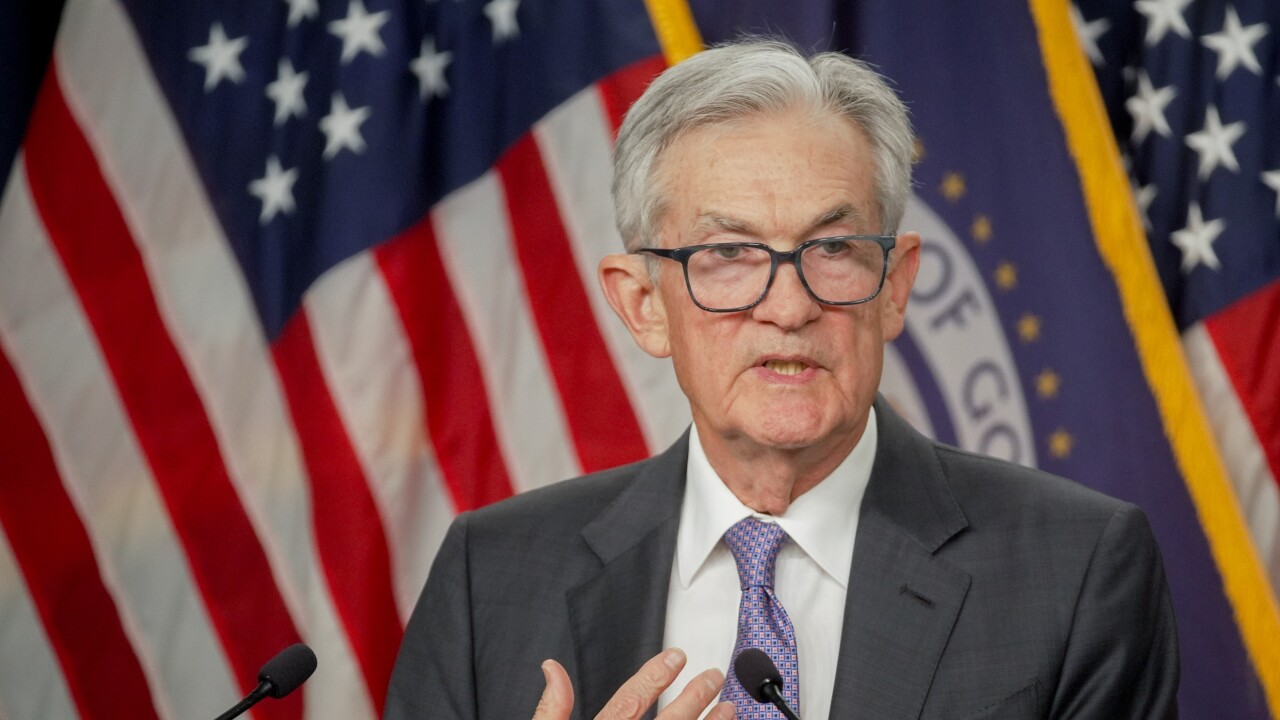-
Berkshire Hills Bancorp in Pittsfield, Mass., is planning a comprehensive review designed to reduce core operating costs.
July 25 -
Wells Fargo and Citigroup are laying off hundreds of employees in their mortgage units as rising interest rates cause home loan refinances to plummet. More layoffs by banks with heavy exposure to mortgages are expected this year.
July 19 -
Downward pressure on loan pricing is putting a slight damper on otherwise positive results in American Banker's latest Index of Banking Activity.
July 2
The spike in long-term interest rates in mid-June played a key role in slowing down the banking industry's pace of expansion, according to the most recent American Banker Index of Banking Activity.
The overall index for June was 57.7,
Lending slowed, but banks were able to charge more for credit, as a result of the higher rates.
Bankers reported slower growth in consumer lending, with index readings for applications (54.2) and approvals (52.6) falling below 59 for the first time since February. In May, the readings were 63.3 and 61.9, respectively. Commercial lending activity also cooled down last month.
"There was a decrease in overall real estate activity due to unknown concerns over QE3," one banker said. "Higher Treasury rates have had a negative impact on the mortgage business," another respondent observed.
Such views were echoed in recent conference calls tied to second-quarter earnings.
"The spike in long-term rates really bent the yield curve and took some expected revenues away sooner than what we had anticipated," Michael Daly, the chairman and chief executive of Berkshire Hills Bancorp (BHLB), said last week during the Pittsfield, Mass., company's quarterly call. "We didn't expect the strong mortgage market to last forever but we did expect it [to last] through the end of the year."
Higher long-term rates provided a spark to loan pricing, which seemed to bottom out and head back up after enduring months of pressure. The increase in pricing proved insufficient to offset slower lending activity.
Consumer pricing registered at 53.7, and commercial pricing was 51.4, marking the first time since the IBA's June 2012 debut that the price of credit rose.
"Loan pricing remains competitive, although the yield on our overall production was pretty stable compared to the prior quarter," Harris Simmons, the chairman and CEO of Zions Bancorp (ZION), said during the Salt Lake City company's quarterly call last week. "Pricing pressure comes predominantly from the largest loans. Pricing on smaller loans has been much more stable."
Rising mortgage rates has made pricing "a little bit better because everybody has shifted up," Chris Carey, chief financial officer at City National (CYN), said during the Los Angeles company's July 12 conference call.
Banks also trimmed payrolls in June; the index reading for staffing fell to 47 in June from 51.7 a month earlier. Executives at several banks, including Wells Fargo (WFC) and Citigroup (NYSE: C), said during quarterly conference calls that they were cutting mortgage jobs as refinance activity declined.
"While business decisions such as these are always difficult, they are a necessary part of our strategy of remaining a competitive and strong player in the mortgage industry, Mark Danahy, Citi's head of origination services,
Berkshire Hills
The IBA is a product of American Banker's monthly surveys of bank executives. The index is published in partnership with VantageScore Solutions. The latest installment was based on 270 responses.
It is a diffusion index. Readings above 50 indicate a monthly expansion of activity, and readings below 50 point to contraction. (For contrary indicators, such as the components that track loan delinquencies and loan-rejection rates, a reading above 50 is considered evidence of deterioration in business activity.)
The further from 50 a reading is, the stronger the indicated change.
The composite index is a simple average of readings on a range of indicators based on responses to survey questions on topics that include volume and pricing trends in commercial and consumer lending, loan balances outstanding and deposit account activity.
Respondents are also asked to weigh in on staffing levels at their institutions, as well as business and real estate conditions in markets where they do business. Every effort is made to make sure that the breakdown of companies included in the executive panel is representative of the industry.
The values for individual components of the index are equal to the percentage of responses indicating increased activity plus one-half of those indicating "no change."
Component scores are then averaged to arrive at a composite. When calculating the composite, contrary indicators such as delinquencies are scored inversely the component figure is subtracted from 100.





